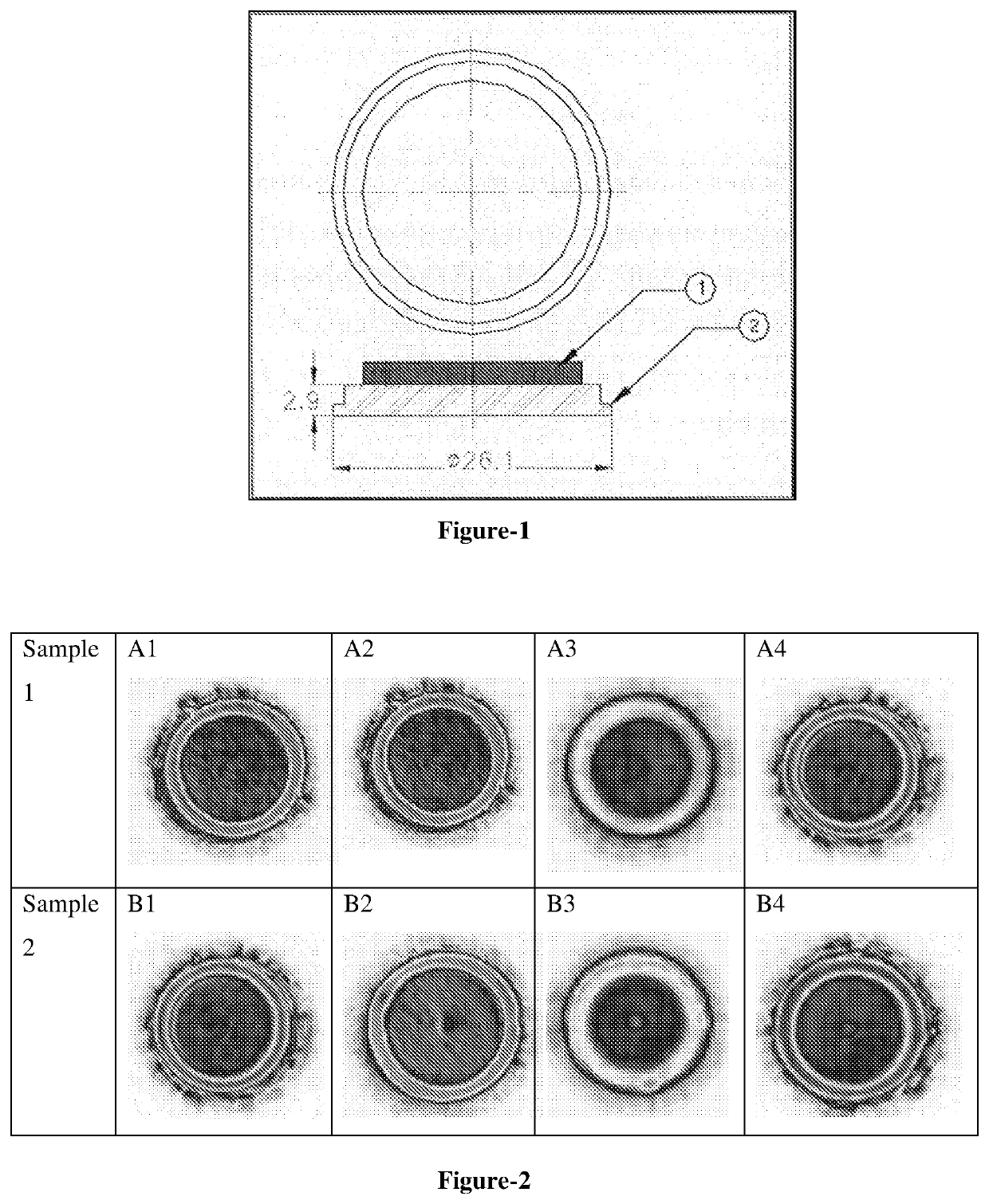Diffusion bonding of piezoelectric crystal to metal wear plate
a piezoelectric crystal and diffusion bonding technology, applied in the direction of mechanical vibration separation, instruments, material analysis, etc., can solve the problems of grease and epoxy sealant degradation, commercial ultrasonic transducers show poor performance at elevated temperatures, and suffer permanent damage, etc., to achieve high temperature operation, simple, cheap and economical
- Summary
- Abstract
- Description
- Claims
- Application Information
AI Technical Summary
Benefits of technology
Problems solved by technology
Method used
Image
Examples
examples
[0094]The following examples are meant to illustrate the present invention. The examples are presented to exemplify the invention and are not to be considered as limiting the scope of the invention
example-1
[0095]Diffusion Bonding of PZT Ceramic to Nickel Wear Plate at 270° C.
[0096]The surface of nickel is polished to mirror finish (with planarity and roughness ten microns and one micron respectively). The surface to be bonded to the piezoelectric crystal is then coated with ˜5 micron silver and is alloyed with nickel by heating under reducing conditions at 700° C. This ensures a good metallurgical bond between silver and nickel. An additional silver coating of ˜2 micron thickness is provided on the silver alloyed nickel surface. Piezoelectric crystal is the PZT-SP6 having approx. 20 micron thick silver electrodes made by screen printing on both sides. One side of the crystal was coated with additional silver coating of ˜2 micron thickness. By heating them under vacuum and by applying pressure using a suitable jig, diffusion bonding occurs between the silvered piezoelectric crystal and silver coated nickel wear plate. The nickel wear plate with PZT-SP6 diffusion bonded to it can then b...
example-2
[0098]Diffusion Bonding of PZT Ceramic to Nickel Wear Plate at 400° C.
[0099]Diffusion bonding of PZT-SP6 to nickel wear plate was carried out at 400° C. by following the method of Example-1.
PUM
| Property | Measurement | Unit |
|---|---|---|
| temperature | aaaaa | aaaaa |
| temperature | aaaaa | aaaaa |
| roughness | aaaaa | aaaaa |
Abstract
Description
Claims
Application Information
 Login to View More
Login to View More - R&D
- Intellectual Property
- Life Sciences
- Materials
- Tech Scout
- Unparalleled Data Quality
- Higher Quality Content
- 60% Fewer Hallucinations
Browse by: Latest US Patents, China's latest patents, Technical Efficacy Thesaurus, Application Domain, Technology Topic, Popular Technical Reports.
© 2025 PatSnap. All rights reserved.Legal|Privacy policy|Modern Slavery Act Transparency Statement|Sitemap|About US| Contact US: help@patsnap.com

